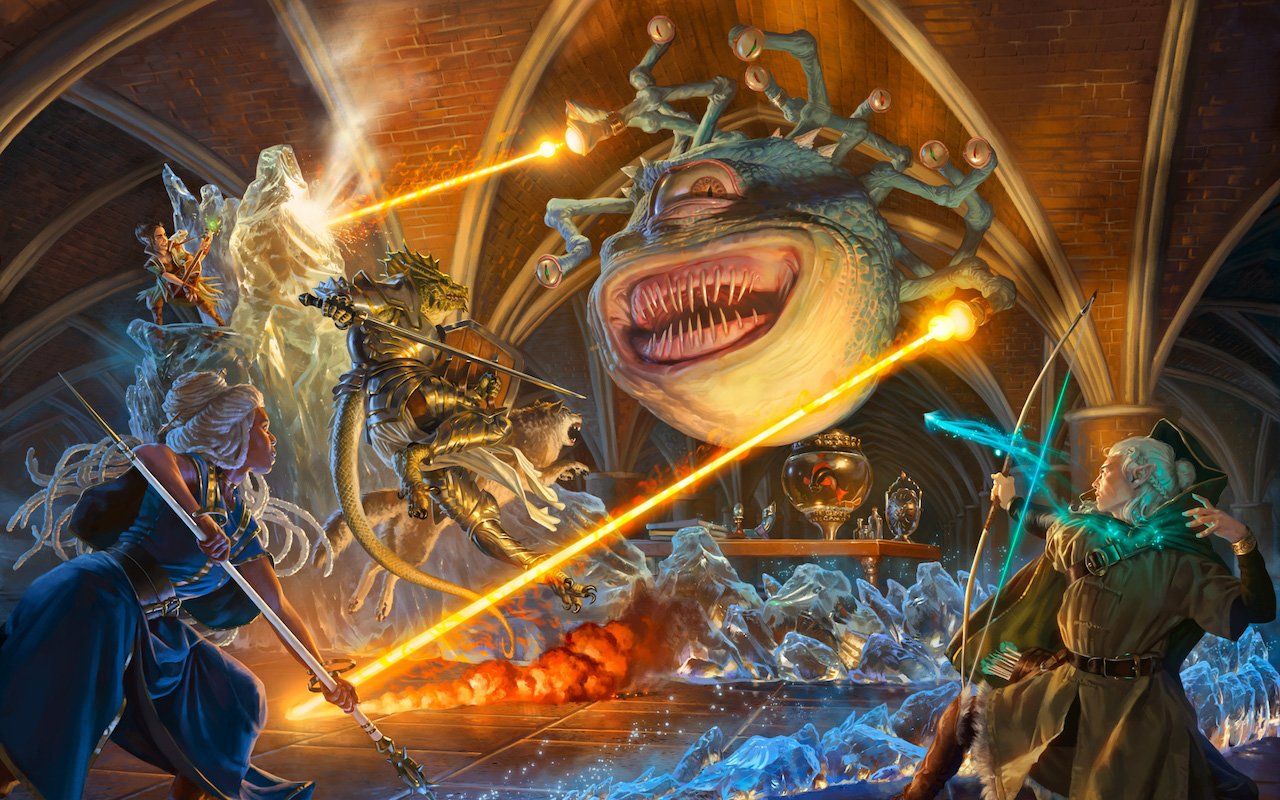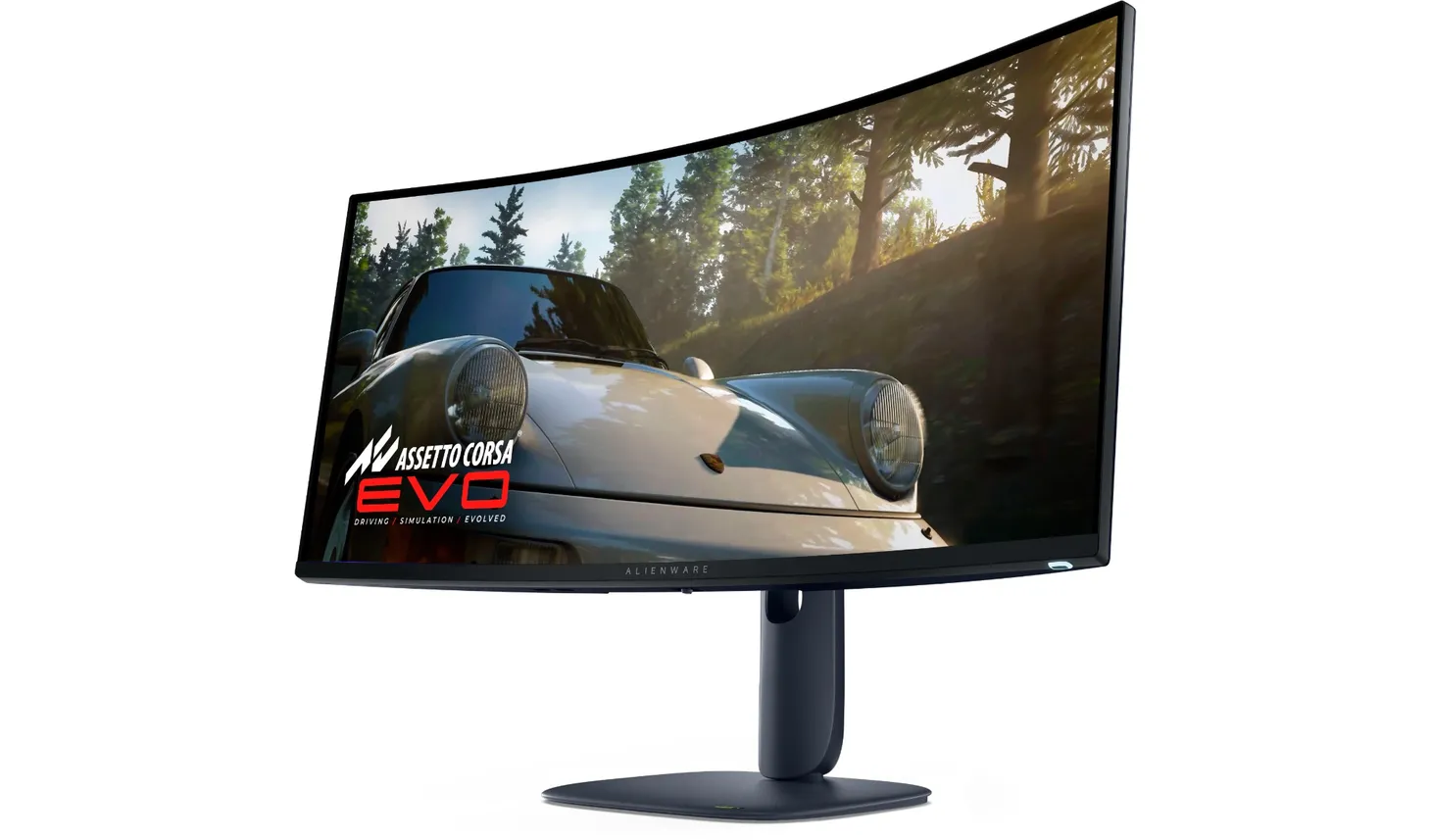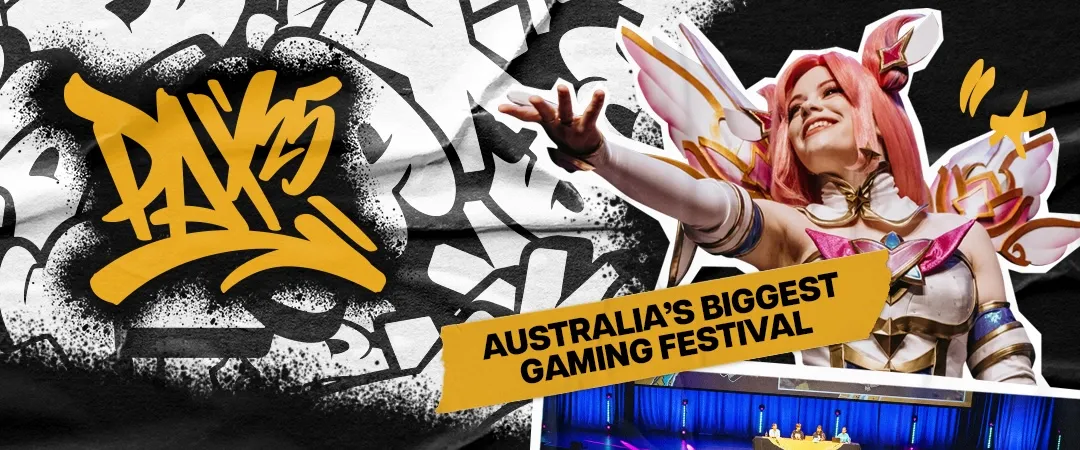Inside the making of the new Dungeons & Dragon's Magic The Gathering set
We speak to James Wyatt and Meris Mullaley from Wizards of the Coast about the art and science of bringing the Forgotten Realms to Magic.

As part of the launch of Magic: The Gathering's new Adventures in the Forgotten Realms set released this week in physical form (and available now on Magic Arena), Wizards gave us the chance to hit some of the design team with our burning hands questions.
Why did it take so long for this to happen? What were the 'essentials' for putting D&D into a Magic context? And how does the art of worldbuilding across Magic and D&D feature in this crossover set?
We hit James Wyatt and Meris Mullaley with our questions. Wyatt has worked across both Dungeons & Dragons and Magic for decades, so he had the deep knowledge of the discussions and theories over the long term on the journey from 'never going to happen' to 'let's do it', while Mullaley's worldbuilding insights and background help us get a handle on the process of weaving the realms with the planes to make a set that everyone can enjoy.
Let's dive in.
James Wyatt, Senior Game Designer
You've lived in both worlds there at Wizards for a long time. Why was now the right time for putting D&D into Magic? Why did it take until now to find the 'right moment'? There must have been many moments where things almost happened in the past?
There have been many such moments, for sure! I remember shortly after I started working at Wizards in 2000, there were conversations happening about doing a Magic monster book. That was only a couple of years after Wizards acquired D&D, and the company was still figuring out how the two games and brands would coexist.
But soon after that, what I refer to as the “conventional wisdom” developed, that we should keep the brands separate and never “cross the streams.” That opinion held on for years. But by the time I moved to the Magic team in 2014, its strength had faded. There were already voices suggesting that the time had come, and when I pitched the idea to do “Plane Shift: Zendikar” as a web supplement to The Art of Magic the Gathering: Zendikar, I was a little surprised that I couldn’t find anyone to say no to the idea!
So I think at that point, AFR became more or less inevitable. We saw that crossing the streams could work and that fans would enjoy it. Guildmaster’s Guide to Ravnica and Mythic Odysseys of Theros proved that D&D books based on Magic settings were viable. Then all that remained to do was the flip side—a Magic set based on a D&D setting. And here we are!
Obviously we've had the D&D supplements based on Planeswalker lore - were you involved in those from the Magic side during your time there? Is that why those came first but now was the right time for a card set?
Yes, I was involved in those from the beginning. It started largely as a way for me to keep my toes in the D&D pool when I joined the Magic team. But it quickly became clear that there was a significant demand for this kind of product that made it worth devoting more resources to.
Where there any 'aha' moments or meetings you can recall that led to deciding on this set being the right idea to run with?
I wasn’t actually part of those conversations.
Lots of readers don't know the back story on Wizards of the Coast having been named after a D&D group, so the connections between the two run very deep. Having worked at both products there for many years, how much shared love of the products have you seen across the two teams?
Tons! I started playing Magic during a period when a number of folks on the D&D team got particularly interested in it, and I’ve run D&D games (set in Zendikar and Ravnica) for members of the Magic creative team. Most of the people who worked on AFR were pretty deeply invested in D&D, which made my job as creative lead relatively easy.
Magic sets have increasingly held interesting storylines within their art and flavour for many years too. While this set isn't Planeswalker canon, how does the set play with the stories of the Forgotten Realms through the set?
True to the spirit of D&D, the “story” of this set is really all about the story that you tell as you play it. There aren’t any “story spotlight” cards in this set like we see in other recent Magic sets. Rather, I think of the modal cards that present you with a story choice—cards like You’re Ambushed on the Road and You See a Pair of Goblins—as the story cards of this set! Which means that the story is what you make it, infinitely retellable in different combinations.
Is the +2 Mace card all about ensuring a D&D card sits alphabetically at the top of the Magic card lists forever more?
You caught us!
What mechanics are you most pleased with in bringing the flavour of D&D to Magic?
I’m most pleased with the venture into the Dungeon mechanic as it seems the most thematically appropriate. Having a clear progression/reward system works well from a gameplay perspective for Magic but it also strongly evokes an image that is so intrinsically tied with D&D.
What was the most fun about bringing this set to life?
I love the way we handled flavorful text in the set—including flavor text per se, but also flavor words nestled alongside the mechanics. The modal “choice” cards are one example, and cards with named abilities that reflect D&D spells and abilities (like Dawnbringer Cleric) are another. Then the flavor text on basic lands, presenting adventure seeds as you play the most fundamental cards in any Magic set.
Meris Mullaley, Worldbuilding Design Manager
Art has always been a big part of both games. How did the art teams express what the similarities and differences are in how art feeds into the two games and how to represent both sides effectively in this set?
There are some creatures and items that have been depicted in rulebooks for years, and we used those source materials as the starting point. We formed an MTG + D&D art team – Zack Stella, Tyler Jacobson, and Richard Whitters – to discuss what visuals were unchangeable and where we had space to update or create something new.
For this project we created a full style guide for the cardset to provide the visual references for the 100% new Magic art.
Talk about the special art choices made for this set, like recreating old module cover styles and classic eras of monster art. Why was this an important part of bringing this set together?
Sometimes our showcase card designs are inspired by a plane’s themes or visual motifs (fairytale storybook frames for Eldraine, wood carving frames for Kaldheim). For Adventures in the Forgotten Realms we took our inspiration from the illustration and graphic design of D&D’s past products.
We hope this set delivers on the fun of Magic and the fun of D&D. To help tap into those memories of the playing D&D, and to acknowledge the long history of D&D, we wanted to feature retro D&D illustrations.
Were classic D&D artists brought back for some of this set, or other artists given the chance to work in retro styles? Which style of art in this set do you feel particularly fond of?
The answer is yes! The art team reached out to both veteran D&D artists and new artists who already work in similar retro art styles for the showcase art. Many long-time D&D artists are also long-time Magic artists so the relationships were already in place.
While the adventure modules that inspired the card frame predate my D&D memories, I really like the module land cards. I love the conceit - the names of these land cards sound like adventure titles and the recognizable frame feels like an invitation to roll up a new character and start an adventure with friends.
How do you see the world of the Forgotten Realms shining through in this card set – how essential was it to make this about 'Forgotten Realms' and not just 'Dungeons and Dragons'?
Dungeons & Dragons as a brand includes multiple settings. Just like Magic is made up of multiple planes. We could have made a cardset that pulled references from all of the D&D campaign settings, but for Magic players unfamiliar with D&D that would have created a disjointed experience. By focusing on a single setting, we can dig deep into the Forgotten Realms and present non-D&D players with a cohesive worldbuilding experience, and also easter eggs for D&D players.
The environments are what really convey the Forgotten Realms to me. From the basic lands to the backgrounds behind creature & spell cards – the environments are what clue your mind into a different world from the many Magic planes we’ve visited before.
I note you have a background and history and archaeology – how does that feed into the way you approach managing worldbuilding in fantastical realms like Magic and D&D?
I think the best fantasy settings are the ones that hint at a deep history. Even if the book, movie, or game don’t necessarily dig into that history, I appreciate a setting that feels lived in. Peoples, architecture, and cultures don’t just spring up out of nowhere. (Unless of course that is the plot of your fantasy.)
At the same time my partner will tell you that having an archaeologist as a player in a D&D campaign means that dungeon crawling takes five times as long. I just wanted to investigate EVERYTHING!
As a worldbuilder, I believe is also important to acknowledge that a great deal of our collective inspiration for fantasy settings comes from our real world. And some of those creative choices can replicate harmful biases and stereotypes about groups of people.
My time working in history and archaeology taught me to scrutinize whose histories are recorded and who gets the right to retell those stories. This extends to fantasy – what stories are we telling and how are we telling them? What other perspectives could we include?
What do you ultimately hope fan reactions are to this set - from both the D&D and Magic sides?
I hope fans feel joy. Being a D&D and Magic player, I smile a lot when I look at the cards. This is something made by people who love both brands, and I hope fans feel that love when the open a booster pack.
Byteside Newsletter
Join the newsletter to receive the latest updates in your inbox.



